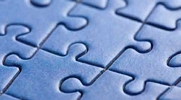Speed Reading: Got Circadian Rhythm?
Sound boring and irrelevant, right? What if the new scientific research produces evidence for your increasing longevity?
A professor in NYU College of Dentistry, Timothy Bromage, at the annual meeting
of the American Association for Dental Research (April, 2008) reported, a biological clock that affects an organism’s overall pace of life, and its life span.
I was absent the day my biology teacher explained Circadian – Ultradian – Infradian rhythms. Check it out – these clocks run our metabolic functions and produce consciousness.
Circadian Rhythm (clock) guides our daily cycle from sleep to wakefulness. The term is from Latin, meaning about a day. It separates day from night, influences our body temperature, thirst and appetite. Oh yeah, cell regeneration.
I was also sleeping in class when Mrs. Crawford said the Suprachiasmatic Nuclei
(SCN) was the master alarm clock in our brain. It receives nerve signals directly
from our retina and its photoreceptors about external light and darkness.
So What
SCN releases hormones and excites neurons for internal control of the Circadian Rhythms. So what? It affects our Reticular Activating System (RAS) to keep us
conscious – awake and alert . You remember how you function under – fatigue, daydreaming, and disorientation.
New research indicates that disruption of our Circadian Rhythm initiates
Bi-Polar Disorder, Depression, and even cancer. The neurotransmitter Melatonin is absent during daylight hours, and excites when the sun sets.
Ultradian and Infradian Rhythms
A clock that is LESS than 24 hours activates ultradian Rhythms. Urination,
bowel, appetite, together with nostril dilation, heart rate, and hormonal release.
Thermoregulation and 90 to 110 minute dream sequences are controlled by our
Ultradian clock.
Our Infradian clock is involved in bodily activities that cycle in greater than 24 hours. Menstruation is one example. How about lunar and tidal changes? From birth to cashing in our chips, we have biological clocks (rhythms) that regulate our
cellular functions.
Dr. Bromage compared the triggering of this new clock with rats, chimpanzees and
Homo sapiens. He was interested in growth in tooth enamel, which he thought was like the annual rings on a tree. Circadian rhythm as well as our tooth enamel clock originates in the brain’s hypothalamus, control center for our Autonomic Nervous System. Imagine if we had to manually run these clocks.
Clock Difference
Rats have a one-day cycle for skeletal bone tissue; chimps have a six-day interval, while humans have an eight to ten day cycle for incremental growth in skeletal bone
tissue. This was the first time (2,008) incremental rhythm was viewed in our bone.
Get This
The same biological rhythm that controls incremental tooth and bone growth, also
affects bone and body size, in addition to metabolic processes. Like what? Heart and
breathing. This same rhythm organizes our overall pace-of-life, and life-span.
The raton grows teeth and bone in one-eighth of the time it takes us, but lives faster
and dies much younger. Some humans have a five-day cycle at one end of the scale,
and others a ten-day clock. Eight days is the average.
Changing Circadian Rhythms For Longevity
There is a key receptor protein critical for our internal molecular clock. It was discovered by Mitch Lazar, M.D. of University of Pennsylvania School of Medicine,
The name is Rev-erb, and is triggered by Lithium.
What if your physician can reset your biological clock to create increased longevity?
Stay tuned over the next two-years.
Learning and Memory
Stanford researchers (October, 2008) produce evidence the Circadian Rhythm is
deeply involved in coding and recall for what we learn.
Professor Norman Ruby and his team show that defects in the operation of the
Circadian Rhythm disables memory function. It is crucial to learning. Does this
apply to Down’s Syndrome, Alzheimers and Parkinson?
Inquiring Minds Need to Know
When you choose to learn something you hear or read, the neurochemical GABA
inhibits or excites our Hippocampus. Human memories are stored in the brain structure called the Hippocampus, and in neurons of our Dendritic Spines involved in the original memory synapse.
If the synapses keep firing without termination (excited), or overly inhibited by
too little GABA, the Circadian Rhythm deletes learning and memory. Exciting
triggers encoding the memories at the molecular level for later recall.
All mammal brains function according to a delicate balance between neurochemicals that excite or calm the brain. For humans, the secret ingredient is
GABA. We require a rhythmic firing (Circadian), not a barrage of synaptic firing.
Aging
When human age our Circadian Rhythm begins to degrade and breakdown.
Short-term memory loss is a direct result of degradation of our Circadian Rhythm.
Too much production of GABA and learning is disabled.
Scientists are presently involved in basic research on extending Circadian Rhythms for increased longevity.
Endwords
There are present strategies to extend your longevity up to ten years, and reduce
the risk of Alz up to 60%. It requires lifelong learning and the principle of use-it-or-lose-it.
Would it improve your education and career prospects by reading and remember
three (3) books, articles and reports in the time your competitors can hardly finish
one?
Ask us how to double your long-term memory and triple your learning skills.
See ya,
copyright © 2008 H. Bernard Wechsler
www. speedread.tv
1-877-567-2500 toll-free
See: Speed Read, Speed Reading
------------------------------------------------------------------------------------------------------------



